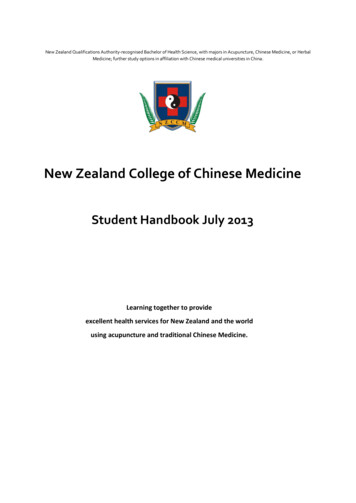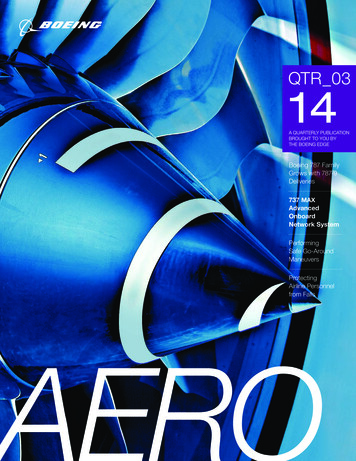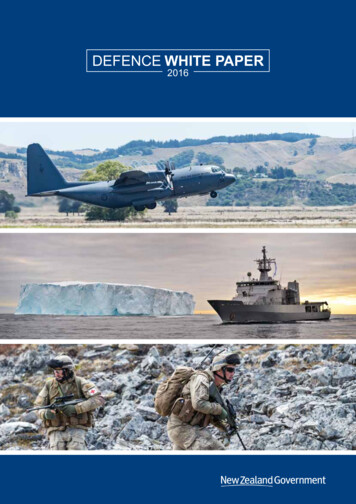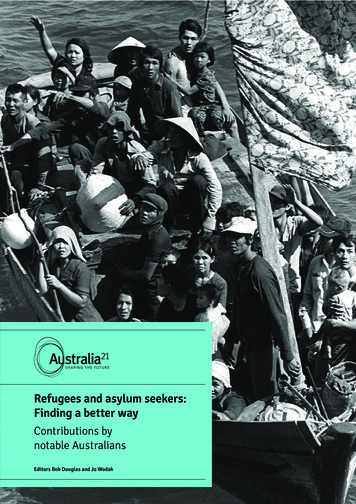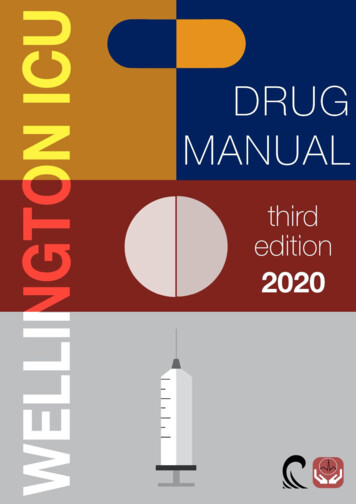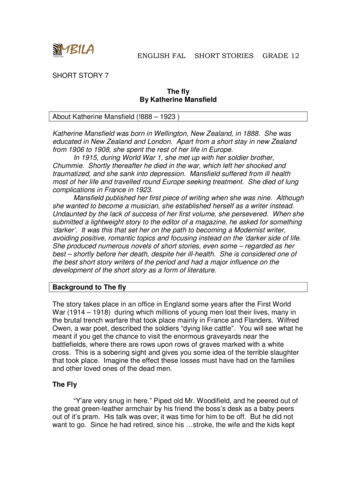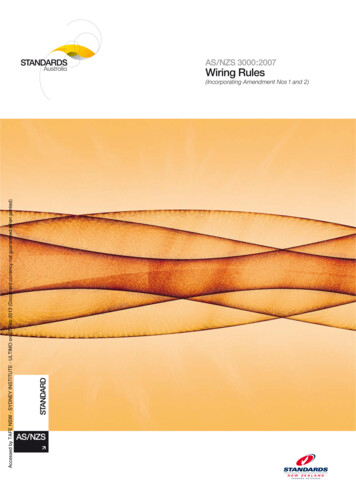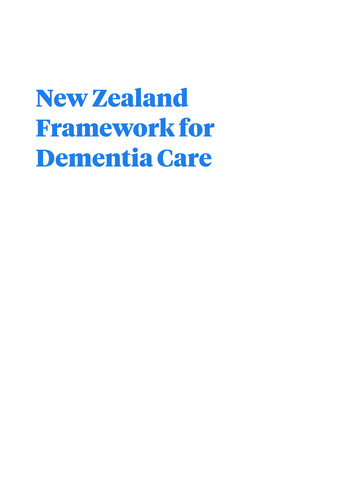
Transcription
Hidden drownings: A New Zealand case studyJohn D Langley, PhD *Gordon Smith MB.ChB., MPH***Injury Prevention Research UnitDepartment of Preventive and Social MedicineUniversity of Otago Medical SchoolDunedinNew Zealand**Johns Hopkins School of Public HealthCenter for Injury Research and PolicyBaltimoreMarylandUSAIntroductionAs part of the International Collaborative Effort on Injury Statistics (ICE) studies are beingundertaken which seek to evaluate and compare differences in vital statistics using specific injurytypes. One such study is of drowning and New Zealand is participating in that study.In order to determine rates, participating countries are being asked to use standard codes to definedrowning. These codes are:E830: Accident to watercraft causing submersionE832: Other accidental submersion or drowning in water transport accidentE910: Accidental drowning and submersionE954: Suicide and self-inflicted injury by submersion [drowning]E964: Assault by submersion [drowning]E984 Submersion [drowning] undetermined whether accidentally or purposely inflictedAlthough this is the complete range of specific E codes for drownings unfortunately it does notidentify all cases of drowning in a country, since there are drownings which occur under othercircumstances and are hidden within other E codes. An insight into the potential significance ofsuch cases is provided by reference to some of the exclusions for E910 listed in ICD 9. The flaillist of exclusions is: diving accident (NOS) resulting in injury except drowning (E883.0) diving with insufficient air supply (E913.2)5-1
drowning and submersion due to cataclysm (E908-E909) machinery accident (E919.0-E919.9) transport accident (E800.0-845.9) effect of high or low pressure (E902.2) injury from striking against objects while in running water (E9! 7.2)Thus in the case where a drowning resulted from a single motor vehicle incident in which thevehicle failed to take a corner and crashed into a river, this would be coded as E816: Motorvehicle traffic accident due to loss of control, without collision on the highway.Rates based on the E codes listed for the proposed international drowning study will thereforeunderestimate the extent of the problem. By how much will depend to some degree on thephysical environment in a given country, such as the length of roadway alongside lakes and rivers.The aim of the study described here was to determine for New Zealand:1) to what degree use of the ICD drowning codes underestimates the incidence of drowning;2) how the "hidden" drownings are distributed across the full range of E codes; and3) whether the proportion of drownings which have been hidden has changed over time.MethodNew Zealand maintains an electronic national mortality data file. All injury deaths are codedaccording to the International Classification of Diseases Supplementary Classification of ExternalCauses of Injury and Poisoning, commonly referred to as E codes (WHO 1975). Injury diagnosesare not coded neither are multiple causes of death. For each injury death there is an electronicfield of up to 95 characters of narrative, which is used to briefly describe the circumstances ofdeath, including the nature of injury. There are no specific guidelines for completing this field.Information for this field is obtained from a variety of sources, including the death certificate,coroner report, and hospital files.Mortality files for the period 1977-92, which were coded in the range E800-E999 (Externalcauses of injury and poisoning), were electronically searched using the key word "drown".ResultsFor the period 1977-92 1913 drownings were recorded under the drowning codes listed above(E830,E832,E910,E954,E964,E984). By searching for the term "drown" we identified 2321cases. This represents a 21.3% increase in cases. All drowning cases identified by drowning codeshad "drown" in the narrative.Table 1 shows the distribution of the drownings identified by the narrative search according to theE code groupings under which they were classified. The majority (65%) of 408 drownings notcoded as such (hereafter referred to as 'hidden' drownings) were coded as E810-E819: Motorvehicle traffic accidents. These incidents represent i 1.4% of the drowning problem in NewZealand. The remainder of the hidden drownings were evenly distributed over a range of E code5-2
groupings (Table 1)Table 2 provides greater detail of the classificationof the hidden E codes, by listing the mostcommon 3 digit E categories to which they were coded. Three findings are of note. First, singlevehicle crashes (E816) accounted for just over half of all cases. They represent 9.4% of alldrownings in New Zealand. For the same period there was a total of 2233 single vehicle crashes(E816), drowning was mentioned as an outcome in the free text in 9.8% of these. Second, is thelarge number of events classified as E957: Suicide and self inflicted injuries by jumping from ahigh place. The effect of the use of this classificationis that reference solely to E954 willunderestimate the size of the suicide drowning problem by 7%. Finally, a similar problem,although less significant, arises when seeking to determine the incidence of drownings associatedwith water transport. The drowning codes in Table 1 suggests there are 511 cases (E830,E832).Reference non drowning codes in Table 1, however, suggests there were an additional 16 cases.Figure 1 shows that the percentage of drownings which were hidden drownings remainedrelatively constant from 1977 until the late I980's, when in 1989 it peaked at 53% then droppedaway but has remained at a higher level in the early seventies, Further analyses of the data revealthat this peak is largely attributable to the increasing significanceof motor vehicle traffic accidentsover time as a contributor to the total drowning burden (Fig 2). Whether there has been a realincrease in these drownings or E code classificationhas changed in recent years is not known.DiscussionThe analyses presented here show that estimates of the prevalence of drowning in New Zealandwill be seriously underestimated by reference solely to the specific drowning E codes. It seemslikely that this will be the situation in other countries. In some countries this matter will be able tobe addressed by reference to the four digit code for the nature of injury, namely: "994.1 Drowningand nonfatal submersion". As previously indicated this, the preferred approach, was not possiblein New Zealand as nature of injury is not coded. It would be available in a limited number ofcountries (e.g. USA) which have multiple cause of death coding.Not only has the use of free text information enabled a more accurate estimate of the prevalenceof drowning but it has also highlighted the significanceof specific drowning events, in particularthose associated with motor vehicle crashes. Motor vehicle traffic crashes accounted for 11% ofall drownings. In the USA the comparable figure is approximately5% (Baker et al 1992).We have also shown that free text information is useful in identifyingcases where only theunderlying cause of death is coded. WHO defines underlying cause as the disease or injury whichinitiated the train of morbid events which produced fatal injury. Therefore if someone intentionallyjumps from a high place and then drowns this incident should be classified as E957. In thiscontext we wish to emphasise that the revised estimate of intentional self drownings (n 116,4.9%) probably remains an underestimate. For example, some of the single vehicle motor vehiclecrashes may be intentionallyself-inflicted. Support for this view is provided by a more detailedinvestigationinto drownings in the Auckland area. That study estimated 28% of all adult5-3
drownings were intentionally self-inflicted (Cairns et al 1984)In the absence of specific guidelines on the contents of the free text field, it seems likely that theestimates produced here are underestimates since limited space may have precluded mention ofinjury diagnosis in some cases, Adding a mandatory diagnostic field that addresses the type ofinjury causing death would address this problem. Some indication of the potential significance offurther hidden drownings is provided by reference to the New Zealand Water Safety Councilsestimates. These are produced by reference to a variety of sources throughout New Zealand. Forthe period 1980-1992, inclusive they estimated, there were 2278 drownings. The comparablefigure from our analyses using free text is 1706, 25% fewer. From a national perspective thisdiscrepancy is of considerable concern. Future research in this area should give priority tomatching the two data files with a view to producing a more accurate estimate of the prevalenceof all drownings and specific drowning types.Given the foregoing, the proposed ICE drowning study should avoid comparing countries ontheir total drowning rate but rather compare countries on each of the specific drowning codeswithin ICD.ReferencesBaker, S. P., O'Neill, B., Ginsburg, M J., & Li, G. (1992). The Injury Fact Book: SecondEdition. (Second ed.). New York, USA: Oxford University Press.Cairns, F. J., Koelmeyer, T. D., & Smeeton, W. M. I. (1984). Deaths from drowning. The NewZealand Medical Journal, 97(749), 65-67,World Health Organisation. International Classification of Diseases, 1975 Revision. Geneva:World Health Organisation 1975.AcknowledgementsThe Injury Prevention Research Unit is funded by the Accident Rehabilitation and CompensationInsurance Corporation, and the Health Research Council (HRC) of New Zealand. Dr Langley is aHRC Principal Research Fellow. Dr Gordon Smith was supported by a grant from the Centers forDisease Control and Prevention Center and by a First Award from the National Institute ofAlcohol Abuse and Alcoholism (K29AA07700). The New Zealand Health Information Serviceprovided the fatality data files. We wish to thank the Lois Fingerhut of the US National Center forHealth Statistics for her encouragement and assistance in preparing this paper. Comments fromDavid Chalmers and Geraldine Whyte on an earlier version of this paper are appreciated.5-4
Table 1: Drowninings in New Zealand 1977-1992Distrubtion of cases identified by electronic search on the word "drown" according to assigned E codeAssigned E 91382.426411.4160.70.7Drowning CodesE830:E832:Accident to watercraft causing submersionOther accidental submersion or drowning in water transport accidentE910:Accidental drowning and submersionE954:Suicide and seifmflicted injury by submersion [drowning]E964:Assault by submersion [drowning]E984Submersion [drowning] undetermined whether accidentally or purposely inflictedSubtotal4.1Non drowing codesE810-ESI9 Motor vehicle traffic accidentsF.,820-E825 Motor vehicle non traffic accidentsE831, FE833-E838 Water transport accidents16E840-E848 Air and space transport accidents160.7E880--E888 Accidental falls190.8E900-E909 Accidents due to natural and environmental factors120.5E950-E953, E955-E959 Suicide and self-inflicted l
Table 2: Drowninings in New Zealand 1977-1992Distrubtion of hidden drownings by most common 3 digit E codesAssigned E codesFreqPercent22053.9E816Motor vehicle traffic accident due to loss of control, without collision on thehighwayE815Other motor vehicle traffic accident involving collision on the highway317.6E957Suicide and self inflicted injuries by jumping from a high place225.4E825E838Other motor vehicle nontraffic accident of other and unspecified nature143.4E884Other and unspecified water transport accidentOther fall from one level to another11112.72.7E841Accident to powered aircraft, other and unspecified102.58921.8408I00.0Miscellaneous (none greater than n 9)Total
Figure 1: Dronings in New Zealand 1977-1994Percentage of hidden drownings by year60 ffIi3o !II2oi. o . j 1., ir777879808182839495Year5-796978889909192
Figure2: Drownings in New Zealand 1977-1994Percentage of MVTC's by year[Drownings in New Zealand 1977-1994Percentngaof MVTC's by yeari40i]30 !2010 -41'\\ Ai.----4 ' j 4 k 41 // " . ,. --j'4"j0 L. . . . . . . . . . . . . . . . . .777879 80 81928384 85 86 87Ynr5-8a88a.89909192
(E830,E832,E910,E954,E964,E984). By searching for the term "drown" we identified 2321 cases. This represents a 21.3% increase in cases. All drowning cases identified by drowning codes had "drown" in the narrative. Table 1 shows the distribution of the drownings identified by the narrative search according to the
